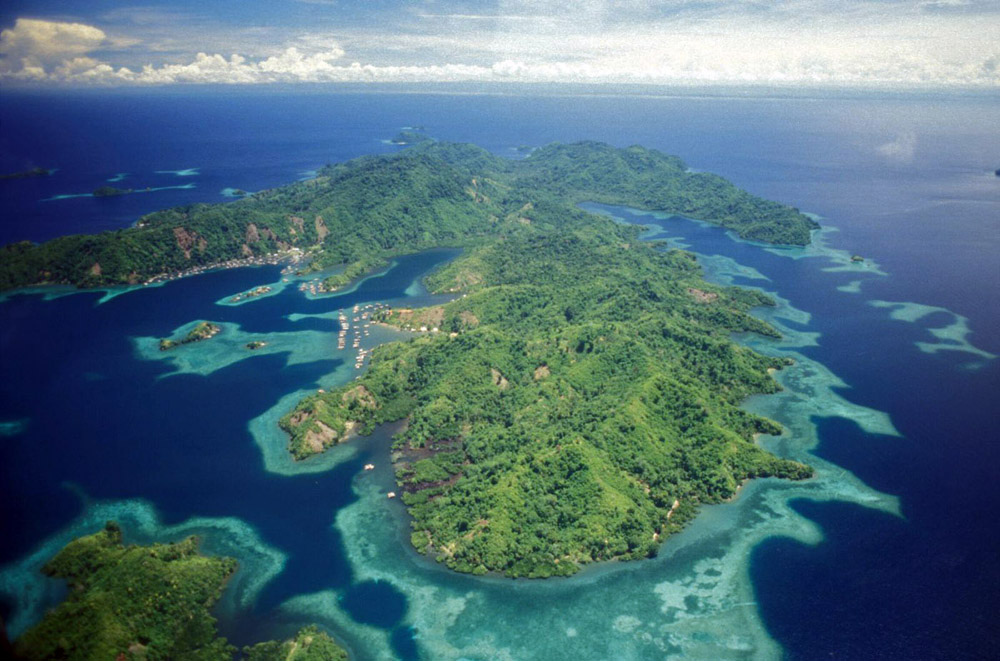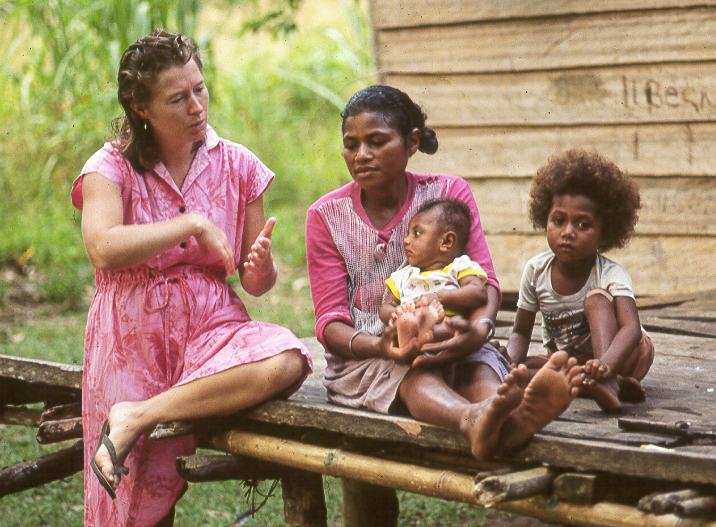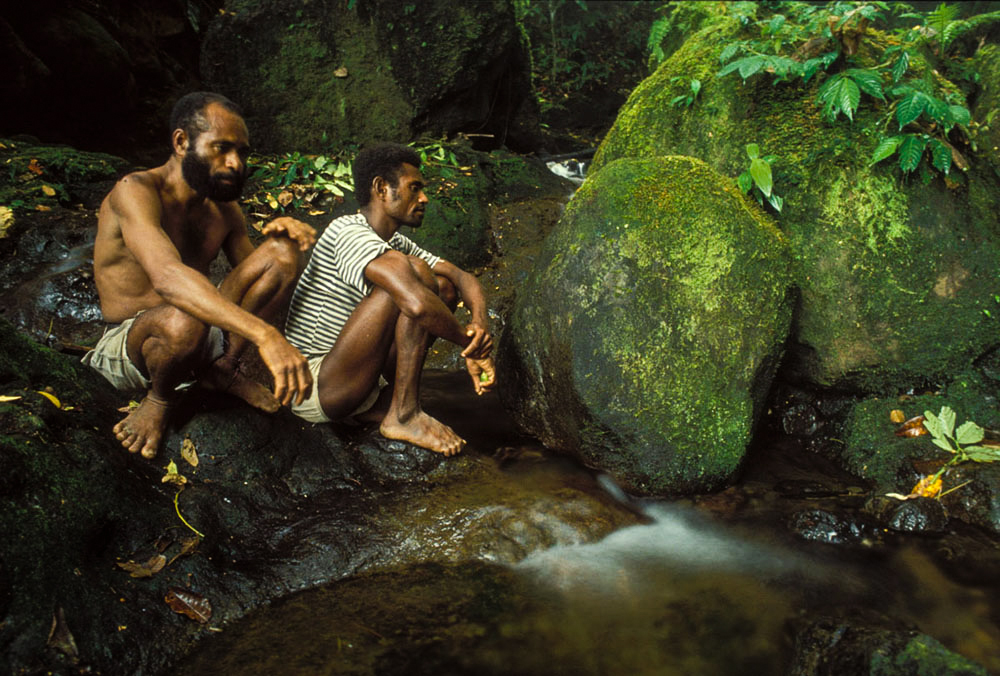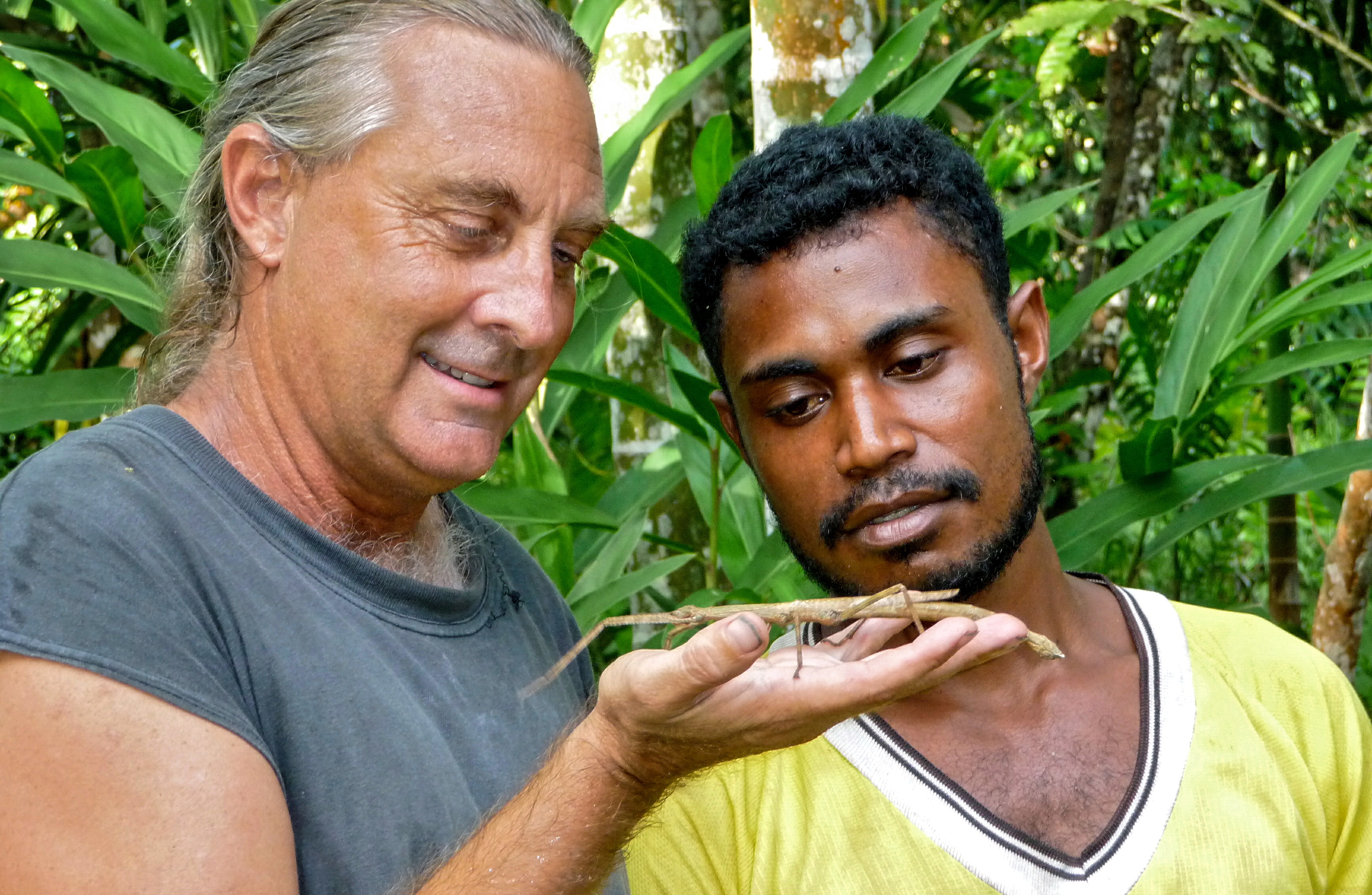“Tuti manini mani, wonong fidoni?” And this one, what’s its name?
I was sitting squatting on the back step of my little wooden shack, at the edge of an isolated village on the edge of the jungle, in what was then known as Irian Jaya. And I was working my way through a pile of freshly caught reef fish—fish that would be more familiar to most of us in an expensive aquarium. “Right, but why is this one different from that one?” They were, according to my New Guinea Fishes book, the same species.
“Ah, this one is young, later it turns into that one.” Okay, that works for me.
My wife and I, and our six-month-old firstborn son, had come to live with these people several months ago, to learn their language and culture, to help them learn to read and write, and to translate the Bible and other materials according to their particular felt needs. They spoke the Ambai language, and as with all other languages, linguists have given it quite a pedigree, all the way from what is called proto-Austronesian.
As we came to know, Ambai is a rich and vibrant language, superbly appropriate for expressing everything that the coastal-dwelling Ambais need to communicate. Every action must be oriented according to the ocean or the land (seaward, landward) or according to how the speaker—and the hearer—is moving in relation to one of those! Not only is it rich in terms and names for fish and tides, it is also, in my completely unbiased opinion, one of the most beautiful sounding languages in the world, with a lilting, musical intonation that carries the hearer along.
Language Group: Ambai
Population: 10,000
Story location: Village of 1,000 in Irian Jaya
- Ambais refer to themselves as "Sea People"
- Traditionally live on stilt homes over the ocean in sheltered bays.
- Fishing and gathering from the ocean, reefs, shores, mudflats and mangroves.
Now, everyone who has learned another language as an adult knows that it’s very hard work. And as the weeks go on and you’re still only able to communicate with new friends at the level of a two- or three-year-old, it can also be quite disheartening. One strategy—and I like to think that it was a strategy rather than just taking the “easy” route—is to learn by focusing on topics, or “domains” that are important and interesting to both the learner and the new culture.
I was always an outdoors-oriented person and I loved nature. I’d known from around age six that I wanted to be a zoologist, studying animals, before most adults around me even knew what the word meant. Somewhere in school that zoologist’s dream had become derailed, and yet now I found myself living in a biologist’s jungle paradise.
So I suppose it was natural that I found myself heading off for a fishing trip to the reef, or to the garden, or to the forest hunting, for my language learning lessons. It certainly came with a price—the guilt of having so much fun when I was supposed to be working. We did hikes and campouts to the mountains, hunting trips to set traps, and often just expeditions to gather materials for building or traditional medicines. And yes, with my notebook, busily scribbling away too.
I believe my Ambai friends taught me well. They were full of the most interesting information. Their knowledge of the environment, its resources and lore, combined with my scientific bent, took us a long way. Soon we had world-renowned experts visiting us to help survey the rivers and reefs, and the forest, and our knowledge grew and was of practical benefit to everyone.
Over the years, the Ambai people become more and more integrated into Indonesian culture, and fewer young people grow up with such intimate knowledge of their natural heritage, both in the environment and in their culture. Recording traditional Ambai knowledge was highly valued by the people, and helped them pass on much of that to younger generations who were becoming less interested and experienced in such.
The work we had so much fun doing has informed a great many issues vital to the Ambai people, such as that of landcare and family and clan history. For science, the benefits were almost immediate and substantial.
Author: David S. Price, Senior Environmental Consultant
Don't miss the second part of the story of Ambai people, the advancements in science and preserving their environment. Subscribe to our facebook page.
Images remain the property of David S. Price and are copyrighted. Used with permission.







